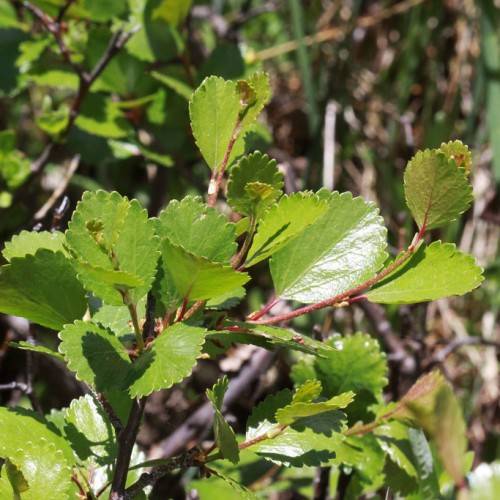
Scrub Birch
Betula glandulosa
Also Known As - Dwarf Birch,Bog BirchWatering:
Average
Hardiness Zone:
Flowers:
Flowers
Sun:
Partial Shade, Shade
Soil:
Loam
Fruits:
Fruits Ready In
Leaf:
Yes
Growth Rate:
Low
watering
Water Yellow Birch (Betula alleghaniensis) regularly throughout the growing season, keeping the soil moist but not soggy. This species fares best with about 1 inch of water per week during their growing season, from spring until late summer. During periods of extended drought, increase watering frequency slightly to ensure the soil is not drying out and the plant remains healthy. When it comes time to water, a deep, slow-soaking of the soil is preferred to encourage deep rooting. Avoid frequent light sprinklings, which can cause shallow rooting and other problems.
sunlight
Yellow Birch (Betula alleghaniensis) does best in bright, indirect sunlight for most of the day. This species of tree needs at least 4 to 6 hours of direct sunlight each day to stay healthy, but too much direct sunlight can cause sunburn to the leaves. The tree should be planted in a location that will get the correct amount of sunlight and shade, as too much shade can also cause health issues for the tree. The best time for this species of tree to receive sunlight is between 9am and 5pm, with the majority of the sunlight coming in the first half of the day. It is important to remember that sunlight conditions can change throughout the year as the days grow shorter in the fall, and longer in the spring.
pruning
When it comes to pruning Yellow Birch, it is best done in late winter or early spring, while the tree is still dormant. This will promote regrowth, as well as thick triangular branch structures and dense foliage. When pruning, remove any dead, diseased or broken branches. If necessary, selectively prune some of the smaller branches from an area of the tree with too much growth, reducing the crown to improve air circulation. To avoid creating large wounds, make sure each cut is done at the branch collar or just outside of it. In terms of how much pruning to do, avoid pruning more than 33 percent of the canopy. Remember, the Yellow Birch has a naturally oval shape, so try to keep this in mind when trimming. Too much heavy pruning may result in the canopy taking on a different shape or becoming denser, so be conservative when pruning.
